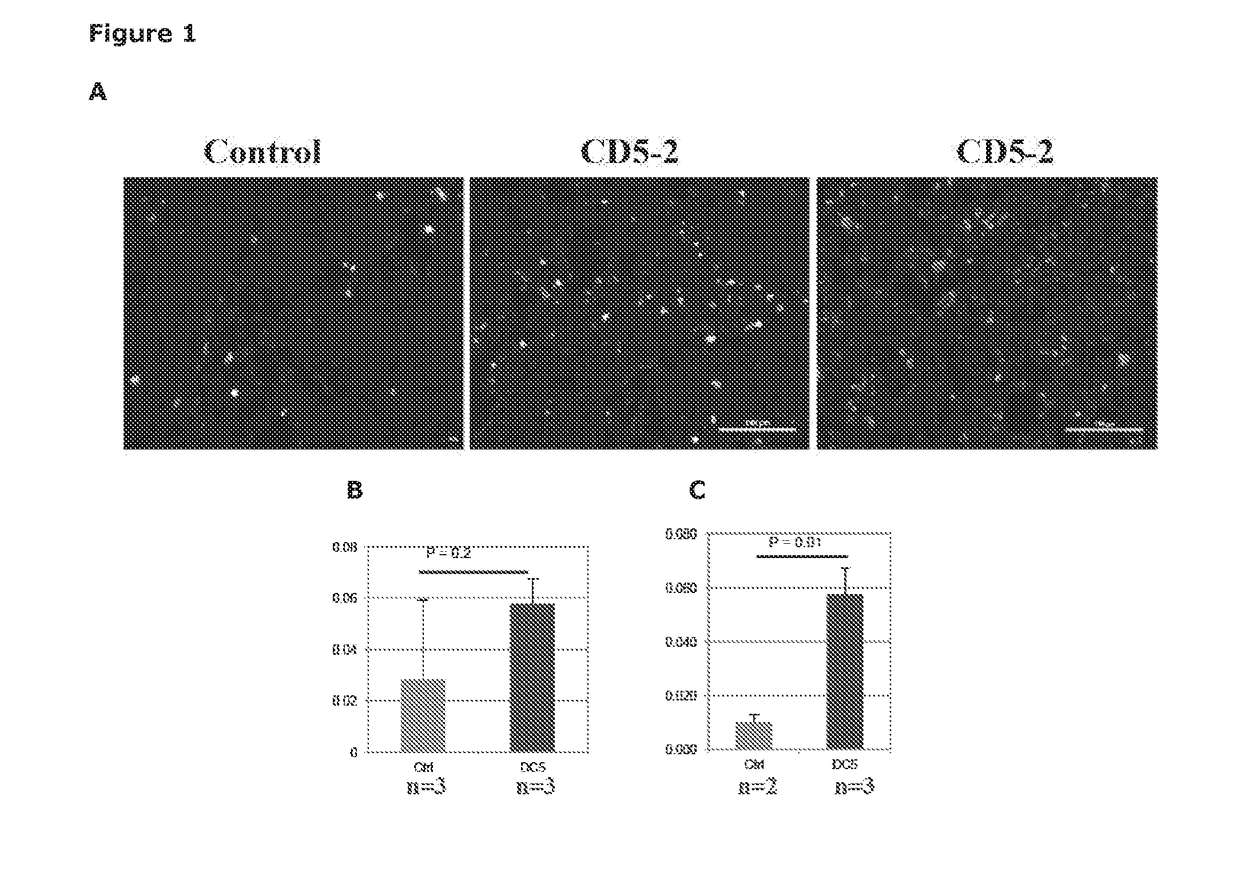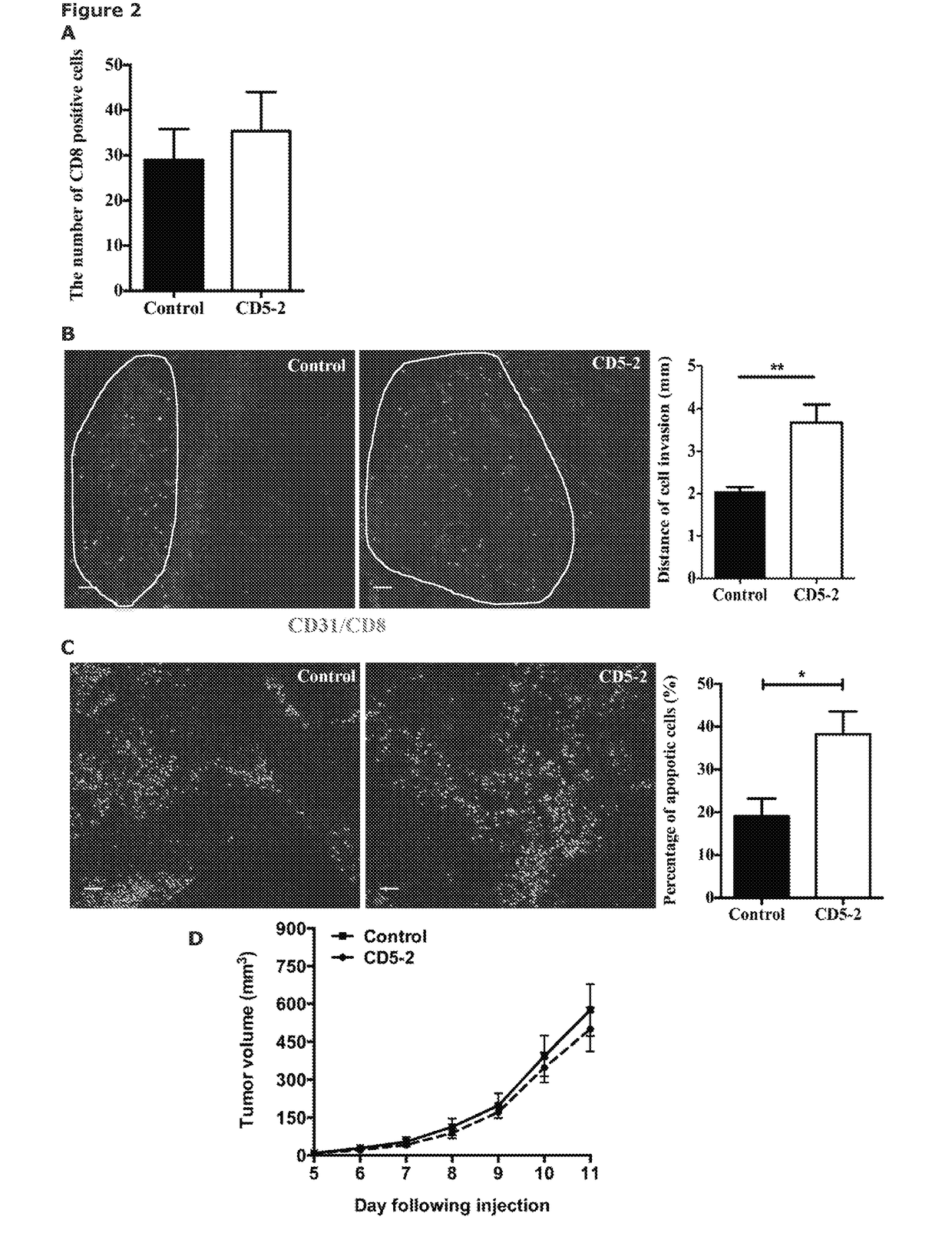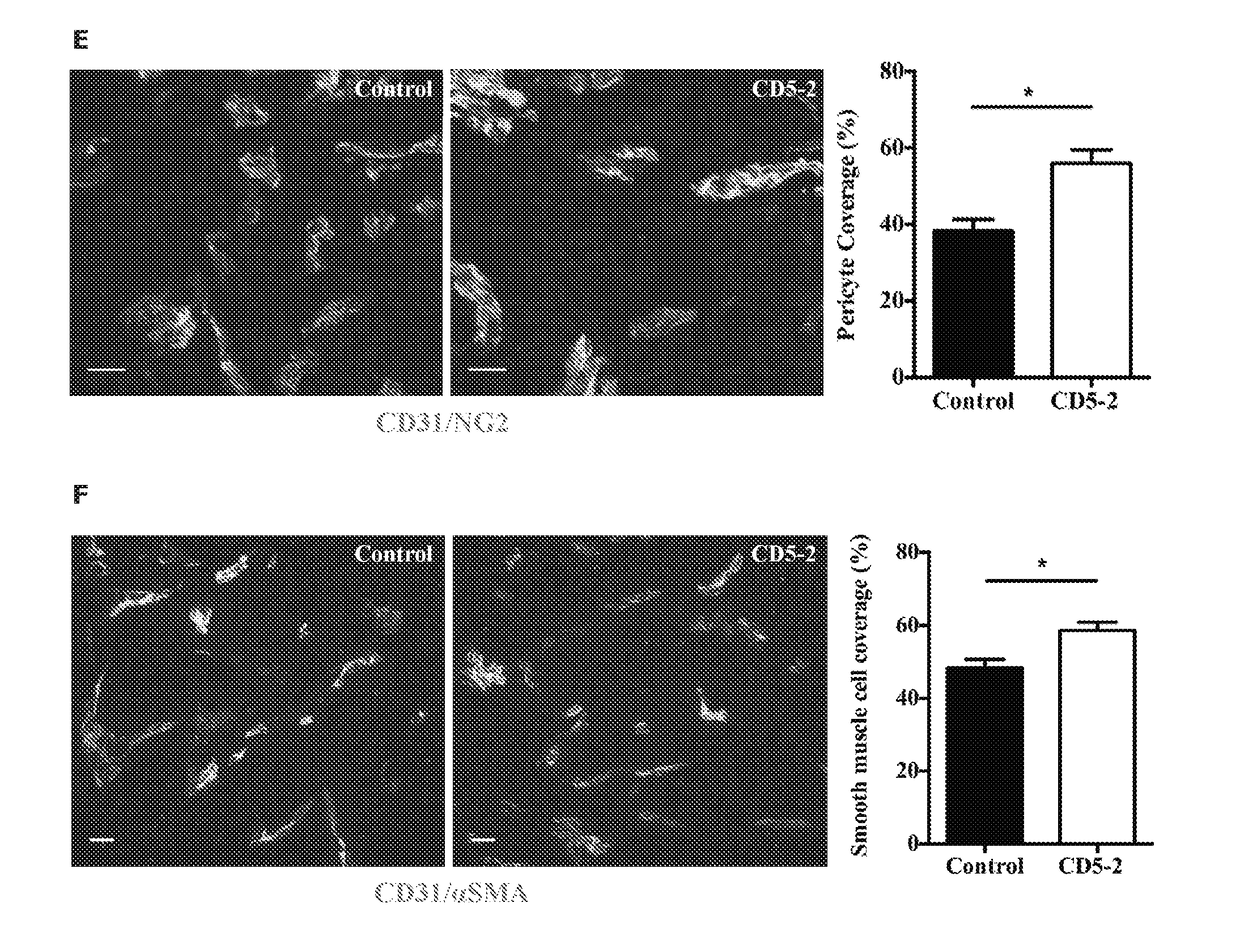Methods for treating tumors
a tumor and tumor technology, applied in the field of oligonucleotides, can solve the problems of hyperpermeable endothelial barrier, different vasculature, impairment of therapeutic treatments, etc., and achieve the effect of increasing the cell death of tumour cells
- Summary
- Abstract
- Description
- Claims
- Application Information
AI Technical Summary
Benefits of technology
Problems solved by technology
Method used
Image
Examples
example 1
ilitates Infiltration of CD8+ T Cells into Tumours and Induces Tumour Apoptosis
[0124]RIP1-TAG5 mice were injected with control Blockmir or Blockmir CD5-2 at 27 weeks of age. Mice were then injected with Tag specific activated CD8+ T cells 2 days later and sacrificed a further 12 days later. Infiltration of CD8+ T cells was determined by immunofluorescent staining for CD8. Mice injected with CD5-2 demonstrated an increased ratio of infiltrated T cells (relative to cells in the field of view) compared with those injected with control Blockmir (FIG. 1), indicating that Blockmir CD5-2 promotes tumour infiltration by adoptively transferred T cells. Thus CD5-2 can modulate the tumour microenvironment to increase sensitivity of solid tumours to an immune response.
[0125]In a further model, the B16F10 melanoma model, infiltration of endogenous T cells into the middle of the tumour parenchyma is increased in Blockmir CD5-2 treated mice compared to that in the control Blockmir treated mice (FI...
example 2
CD5-2 Modulates Tumour Vasculature and Tumour Vascular Cell Morphology
[0128]Tumour vasculature in mice with B16F10 melanoma was visualised using immunohistochemistry for CD31. Mice treated with Blockmir CD5-2 6 to 8 days prior to sacrifice displayed smaller vessels within tumours than control Blockmir treated mice. While the number of vessels per field in Blockmir CD5-2 treated mice was higher than that of control Blockmir treated mice, the average blood vessel volume was significantly reduced in mice that received Blockmir CD5-2 (FIG. 3), indicating that Blockmir CD5-2 can alter the morphology of tumour vasculature without vessel pruning. Consistent with this, CD5-2 treated ECs in vitro showed no changes in angiogenic-associated characteristics including proliferation (data not shown), senescence (data not shown) and migration (data not shown).
[0129]FIG. 4 demonstrates scanning electron microscopy of blood vessels within a B16F10 melanoma. Abnormal morphology of endothelial cells i...
example 3
sculature Function is Altered by Blockmir CD5-2
[0132]In addition to altered structure of tumour vasculature, Blockmir CD5-2 modulated permeability and perfusion of tumour vasculature in the B16F10 mouse melanoma model. FIG. 8 demonstrates the extravasion of R50 fluorescent microspheres injected into control Blockmir or Blockmir CD5-2 treated mice. CD5-2 reduced the vessel permeability as measured by the number of R50 fluorescent microspheres within the tumour parenchyma (FIG. 8A). As shown in FIG. 8B, there was a significant reduction in the ratio of microspheres to endothelial marker (CD31) in Blockmir CD5-2 treated animals relative to controls, indicating reduced leakiness of vessels with Blockmir CD5-2 treatment. Consistent with this decreased vascular permeability there was a decrease in the extent of fibrinogen deposited into the matrix (FIGS. 8C and 8D).
[0133]Furthermore, the percentage of perfused tumour vessels, as demonstrated with FITC-lectin / CD31 immunofluorescence coloca...
PUM
| Property | Measurement | Unit |
|---|---|---|
| pH | aaaaa | aaaaa |
| pH | aaaaa | aaaaa |
| volume | aaaaa | aaaaa |
Abstract
Description
Claims
Application Information
 Login to View More
Login to View More - R&D
- Intellectual Property
- Life Sciences
- Materials
- Tech Scout
- Unparalleled Data Quality
- Higher Quality Content
- 60% Fewer Hallucinations
Browse by: Latest US Patents, China's latest patents, Technical Efficacy Thesaurus, Application Domain, Technology Topic, Popular Technical Reports.
© 2025 PatSnap. All rights reserved.Legal|Privacy policy|Modern Slavery Act Transparency Statement|Sitemap|About US| Contact US: help@patsnap.com



